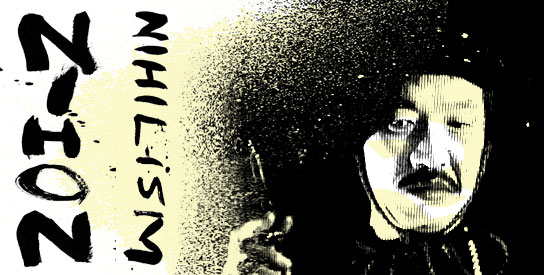 Last October, Kôji Wakamatsu was struck by a taxi cab, dying later in hospital. Wakamatsu had worked solidly for half a century, right up until his sudden death, and left behind a healthy stable of films. While not everything he made warrants a viewing (with over a hundred titles to his name, that’s no surprise), I’ve really enjoyed a lot of his work, especially the films he made with writer Masao Adachi.
Last October, Kôji Wakamatsu was struck by a taxi cab, dying later in hospital. Wakamatsu had worked solidly for half a century, right up until his sudden death, and left behind a healthy stable of films. While not everything he made warrants a viewing (with over a hundred titles to his name, that’s no surprise), I’ve really enjoyed a lot of his work, especially the films he made with writer Masao Adachi.
VIOLATED ANGELS
original title: 犯された白衣 (Okasareta Hakui)
Japan, 1967, Kôji Wakamatsu
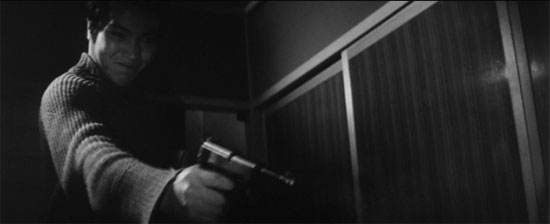
With a running time just ticking over fifty minutes, Violated Angels‘s script is brisk and straightforward. A group of nurses spot a young lurker (Juro Kara) outside their dorm and playfully drag him inside to join in spying on two of their roommates who are engaged in steamy lesbian sex. Its harmless fun, until the young man pulls out a gun killing one of the women mid-coitus.
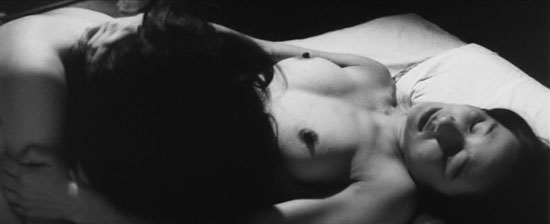
The man takes the nurses captive, raping and murdering them systemically. Some beg for their lives, others remain stoically silent. The man hallucinates images of the women mocking him, which stirs up bouts of violent fury.
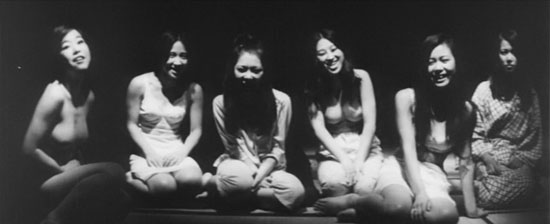
In terms of its narrative, Violated Angels is certainly nothing special. The story itself is bare bones, giving little insight into the shooter’s psyche outside of a photographic montage that introduces the film and a few hints towards the conclusion. This stripped back approach I liked, but Wakamatsu often succumbs to artistic pretension, especially in its beautifully shot but rather empty finale.
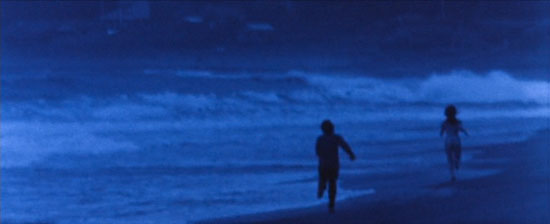
Pushing aside the lack of substance, Violated Angels is at least impressive stylistically. The black and white cinematography by Hideo Itoh is wonderful. The use of brief moments of colour stock was not uncommon at the time in low budget Japanese cinema, but it’s especially effective here, punctuating certain shots and giving the bloody crimes an unearthly quality. A shot towards the end in particular is breathtaking: Juro Kara surrounded by a circle of his victims.
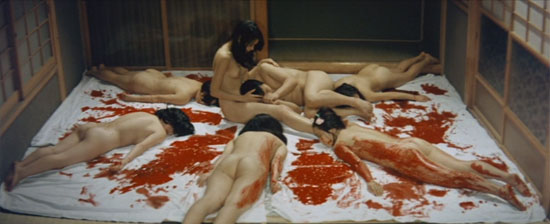
The sound scape is also incredible. Swirling winds and echoed laughs fill the speakers. This coupled with the confined setting makes for an intense viewing experience; one that is hard not to get swept away in.

While Violated Angels is unsettling, the violence is not gratuitous. In fact, it is barely shown. Most of the murders are kept off screen. Wakamatsu uses other methods to unnerve his audience: lingering scenes of characters desperately begging for their lives, shots of the horrific aftermath of murder, and Juro Kara’s blank-faced sadism.
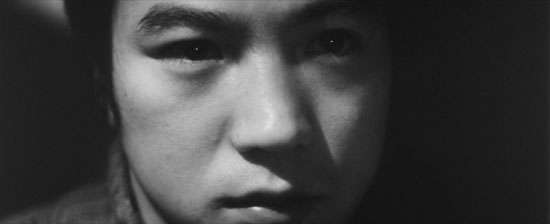
Violated Angels is not among my favourites from Wakamatsu, but it’s still an excellent example of rising above budgetary constraints. Limiting himself mostly to one location with a small cast, Wakamatsu creates a claustrophobic nightmare that is rather nice to look at, albeit a little shallow.
Availability:
Violated Angels was given a great French release in the first volume of a series of Wakamatsu collections. The DVD contains English subtitles and the print is excellent. Unfortunately, it’s out of print and ridiculously pricey.
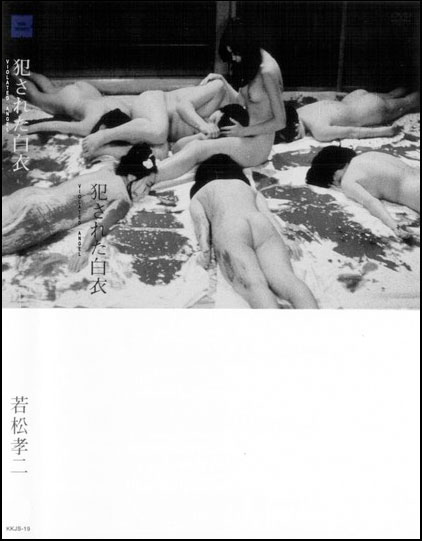






2 comments
Roger E. says:
Aug 30, 2013
This is a great review.
Abortion (1966) | MONDO EXPLOITO says:
Jun 4, 2015
[…] his collaborations with Wakamatsu where Adachi served as a writer — for example, the brilliant Violated Angels (1967) and claustrophobic The Embryo Hunts in Secret (1966) — he also directed a handful of his […]